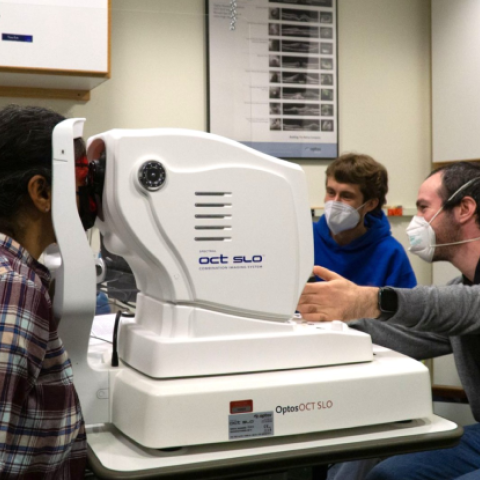
- Principal Investigator:
- Manfred MacKeben
We investigated whether relative motion can serve as a cue for sustained attention. We found that relative motion perception has a long latency and that it can indeed attract attention to improve discrimination performance.
Reference
Poggel DA, Strasburger H, MacKeben M. (2007) Cueing attention by relative motion in the periphery of the visual field. Perception 36(7) 955 - 970. (pubmed)

